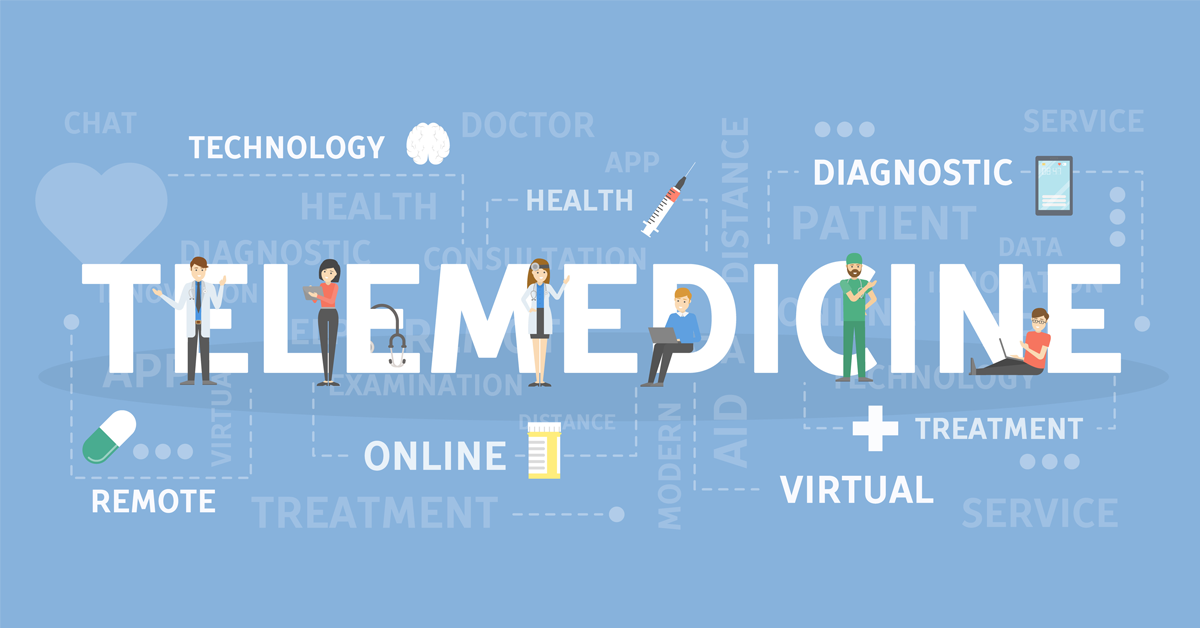
01 Jan 4 Ways Telemedicine Helps You Win the Battle of On-Demand Care
The ever-changing landscape of healthcare means that primary care physicians face tough competition. Pediatricians recognize that on-demand care options like urgent care centers and retail clinics are taking pediatric patients away from their medical homes. However, research suggests that the greatest threat to traditional healthcare is direct-to-consumer telemedicine.
During the winter months, more children get sick, and many families are so busy that they find care where it is most convenient. By offering telemedicine at your practice, you can improve accessibility when these situations occur.
Don’t let uncertainty hold you back. Your patients are better off seeing you via telemedicine — gaining your guidance — than seeking care outside the medical home. Here are 4 ways telemedicine helps you win the battle of on-demand care.
1. Virtual Visits Foster Relationships
The Advisory Board conducted a survey that asked nearly 5,000 consumers what they considered the most important aspect of a primary care virtual visit. The answer? That the virtual appointment is with the patient’s regular doctor. Provider continuity was even slightly more important to the average consumer than cost.
This is especially relevant to pediatrics. Parents want to know that their child’s pediatrician is going to be there for them. Many of the physicians at retail clinics or direct-to-consumer telemedicine services lack the skill and experience you bring.
With shopping for a doctor becoming more common, families are more likely to choose a pediatrician who offers telemedicine appointments. Relationships matter, and telemedicine is a great way to foster rapport between pediatricians and patients. Even millennial parents who seek primary care for their kids like technology, but they still want to see someone they know.
2. Telemedicine Preserves the Medical Home
Keeping patients in the pediatric medical home supports continuity of care, improved outcomes, and patient retention. When pediatric patients go outside the medical home — to urgent care centers, retail clinics, or direct-to-consumer technology solutions — they lose the benefits of specialized pediatric care.
When your patients stay in the medical home, it’s also good for your pediatric practice’s bottom line. Do you have data on how many of your patients are going elsewhere? If you don’t, you may be surprised. Many practices report that 10-15 percent of their overall revenue is being lost to other providers outside the medical home.
If you’re already on a call or have time in your offices, offering telemedicine has a minimal fixed cost. By doing 30-35 virtual visits per month, you can bring in about $1,500-$2,000 in revenue. That’s just one or two virtual visits per day, allowing you to stay viable and independent.
3. Virtual Appointments are Convenient for Patients
Patients and parents are seeking convenience. With virtual visits, there are the obvious conveniences of being able to stay home and not having to sit in a waiting area or exam room or drive a sick child and the family to an office or urgent care for a simple visit.
Long wait times to see a provider for sick care raises interest in virtual visits. Two-thirds of the Advisory Board’s survey respondents said if they were sick and the wait time to see their regular provider was more than one day, they would consider a virtual visit.
The survey also found that consumers are interested in quicker sick visits. More respondents were attracted to a virtual sick visit for their child than for themselves. Fifty-seven percent of parents said they would strongly consider using a virtual visit if their child was sick.
Your practice can be the most convenient offering for your patients via virtual visits.
4. Telemedicine Offers Reassurance to Sick Patients and Their Families
When children are sick, parents tend to worry about their symptoms. According to Dr. Barton Schmitt, the most common concerns are cough, vomiting, colds, asthma attacks, and croup. A study from the British Medical Journal found that when parents’ “anxiety has reached a certain level, consulting a doctor seems their only option. Overall, parents ask for immediate care when they are afraid of a serious disease. They seek prevention, diagnosis, and reassurance. Treatment and cure are secondary to them when using out-of-hours services.”
Essentially, parents want to know if their kids can go to sleep and see the doctor in the morning. Parents’ concerns are usually not complicated. Often, they’re the “bread-and-butter” things pediatricians handle all the time.
A virtual visit allows you to easily see if a child is dehydrated, in respiratory distress or allows you to get a good look at a rash. There is a lot of visualization that can happen as part of a physical exam that doesn’t require a peripheral device or “hands-on” care. No, you can’t look in their ears or run a diagnostic test, but you can talk with the child and the parents, guide them to more urgent care or ask them to come in later for a strep test.
Still unsure? Consider what care you offer over the phone that could be far more efficient and accurate with a virtual visit. Also, review the fax machine reports of your patients being seen elsewhere. Did they get great care? Could you have offered better care via telemedicine?
In summary, consider what you can offer to your patients and your practice with the addition of telemedicine. Don’t let uncertainty hold you back. Your patients are better off seeing you via telemedicine — than seeking non-pediatric care outside the medical home without your care or guidance.
Guest blog submitted by Mick Connors, M.D. – Anytime Pediatrics.



